 |
Picks is a monthly sampling of Japan's art scene, offering short reviews of exhibitions at museums and galleries in recent weeks, with an emphasis on contemporary art by young artists. |
 |
 |
 |
2 November 2009 |
 |
| 1 | 2 | |
 |
|
 |
 |
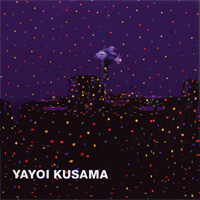 |
|
| Yayoi Kusama: Propagating Room |
| 8 August - 8 November 2009 |
Comme des Garcons "Six"
3-12-22 Minami-Senba, Chuo-ku, Osaka
(Osaka) |
 |
| An exhibition by the venerable avant-garde artist Yayoi Kusama inaugurates Six, a new art space on the second floor of the Comme des Garcons store in Shinsaibashi, Osaka. Kusama's ubiquitous polkadots glow from the surfaces of desks, chairs and bookshelves in the blacklit room, amply communicating the all-consuming nature of her dot obsession. |
|
|
 |
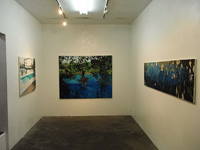 |
|
| Mami Fukumura |
| 7 - 19 September 2009 |
Galler Ami & Kanoko
(Osaka) |
 |
| This solo show features paintings that have to do with water: a school swimming pool, a lakeshore -- perhaps Lake Biwa, on whose shores Fukumura grew up. Several of them view bodies of water from the air. Vivid greens and blues dominate throughout. Fukumura's works are spacious and liberating, with a remarkably stress-reducing, healing effect on the viewer. |
|
|
|
|
|
|
 |
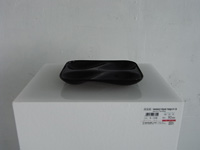 |
|
Kenji Toki: Undiscarded Forms |
| 5 - 19 September 2009 |
Gallery Gallery
(Kyoto)
|
 |
| Lacquer artist Toki has subjected supermarket food package trays to the hollow-core dry lacquer technique to produce this unorthodox series of works. Included are trays for eggs, fermented soybeans, minced pork, and even a mango tray from England. In their reincarnations as black lacquerware, these throwaway items acquire an aura of beauty and refinement. It takes an effort to remind oneself that these are objects that usually wind up in the recycle bin. |
|
|
|
|
|
|
|
 |
|
| Dogs, Cats and Humans |
| 10 September 2009 |
The Film School of Tokyo
(Tokyo) |
 |
| In this documentary, filmmaker Motoharu Iida scrutinizes relations between humans and their pets against a sobering backdrop: the fact that over 300,000 dogs and cats are put to death every year in Japan. It is a powerful work that forces viewers -- pet owners or not -- to address questions we rarely ask about how to coexist, and seek mutual happiness, with these "strangers" in our midst who don't speak our language. |
|
|
 |
|
 |

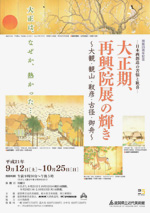 |
|
Saiko Nihon Bijutsu-in, the Taisho Period |
| 12 September - 25 October 2009 |
The Museum of Modern Art, Shiga
(Shiga) |
 |
|
The Japan Art Institute Exhibition, or In-ten, is one of the preeminent public art shows in Japan today. But back in the Taisho Period (1912-26), when it was first inaugurated as the Saiko ("Reorganized") Nihon Bijutsu-in, it was the outsider gadfly challenging the government-sponsored Bun-ten. This retrospective highlights the liberal heyday of the In-ten at the height of Taisho Democracy. But before the end of the Taisho, the In-ten would itself join the conservative mainstream, and a look at that period of transition might be even more intriguing.
|
|
 |
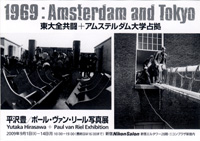 |
|
Yutaka Hirasawa / Paul van Riel - 1969: Amsterdam and Tokyo |
| 1 - 14 September 2009 |
Shinjuku Nikon Salon
(Tokyo) |
 |
|
In 1969 students in Japan took over the University of Tokyo, and their counterparts in the Netherlands occupied the University of Amsterdam. This exhibition brings together some 70 photographs chronicling those two events. Comparing these images of concurrent youth rebellions on opposite sides of the world, one is struck by the differences in style -- distinctly Japanese and European, perhaps. One wonders if photos of political movements today might reveal more similarities in this age of globalization of all things, even protests.
|
|
|
|
|
|
|
|
|
|
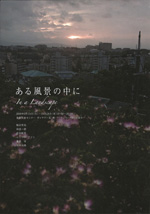 |
|
In a Landscape |
| 15 September - 18 October 2009 |
Kyoto Art Center
(Kyoto) |
 |
|
Assembling artwork that seeks to discover something new in everyday landscapes or environments, curator Hironori Yasukochi identified two approaches to this effort and classified his participating artists accordingly. Ichiro Okada, Akio Suzuki, and Mamoru Fujieda represent those who reveal what is already hidden in a landscape, while Tetsuya Umeda, Yoshitaka Yazu and Atsushi Nishijima manipulate the relationships between familiar images or sounds and the self.
|
|
|
|
 |
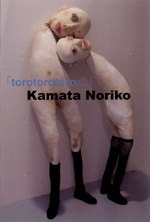 |
|
Noriko Kamata: torotorotoro... |
| 20 September - 12 October 2009 |
Shonan Kujirakan
(Kanagawa) |
 |
|
In this solo show, Iwate prefecture resident Kamata presents a mix of cloth dolls and drawings. Dolls typically exude a human-friendly aura, but Kamata's are different -- though nominally human in form, they seem to reject intimacy. Just as person-to-person communication, however deep and intimate, always carries the risk of betrayal, Kamata's dolls may indeed be more truly human than most.
|
|
|
|
|
 |
|
 |
|